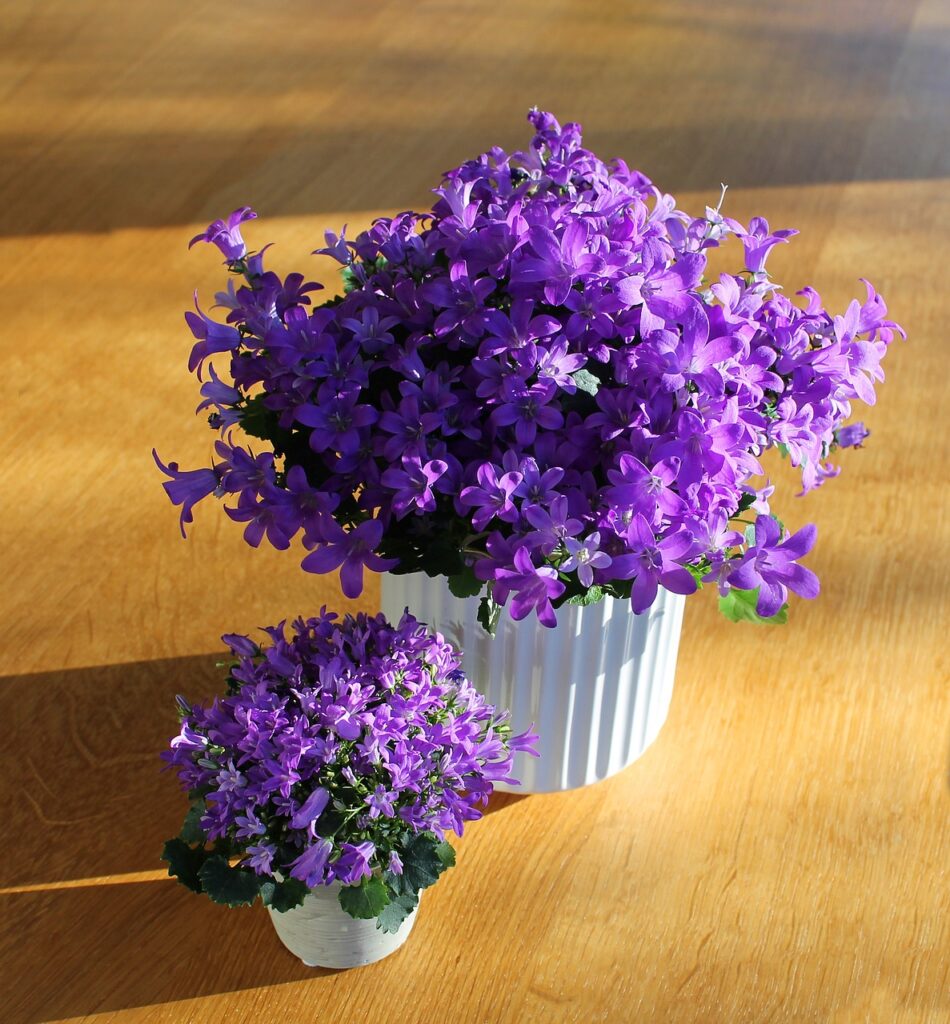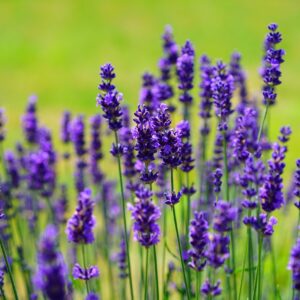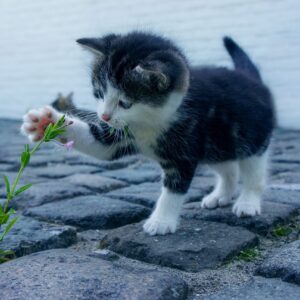Are you looking to add some life and personality to your shelves? Look no further than beautiful houseplants! Adding greenery to your decor not only adds visual interest and texture, but it also has numerous health benefits such as improving air quality and reducing stress levels.
However, styling shelves with houseplants can be daunting for those who are not experienced in plant care or interior design. But have no fear, in this article, we will guide you through the process of choosing the right plants for your shelves, understanding their lighting requirements, creating balance and visual interest with placement, and incorporating other decorative elements.
With our tips, you will be able to create a stunning display of beautiful houseplants that will elevate any room in your home. So, roll up your sleeves and let’s get started on transforming your shelves with the power of greenery!
Choosing the Right Plants for Your Shelves
Picking out just the right leafy friends for your space can be a tough task, but we’ve got some tips to help you choose the perfect plants for your shelving display.
Start by considering the pot size of the plants you want to display. If your shelves are small, opt for smaller pots that won’t overwhelm the space. If you have larger shelves, feel free to mix and match pot sizes for a more dynamic look.
Another important consideration is color coordination. Choose plants with leaves that complement the color scheme of your room. For example, if your shelves are in a room with a lot of green and blue accents, consider plants with green leaves or blue-green foliage.
If your room has warmer tones, such as yellows and oranges, go for plants with red or purple leaves to add a pop of color. By selecting plants that fit well within your overall aesthetic, you’ll create a cohesive and visually appealing display.
Understanding Lighting Requirements for Houseplants
Just like us, plants have their own preferences when it comes to lighting, so it’s important to understand their needs in order to keep them thriving.

When it comes to indoor vs outdoor plants, indoor plants generally require less light than outdoor plants. However, this doesn’t mean that they don’t need any light at all. In fact, most indoor plants do best in bright, indirect light.
When it comes to artificial vs realistic lighting, while artificial lighting may be convenient, it’s important to choose the right type of bulb. Plants need a light source that mimics natural sunlight as closely as possible, so look for bulbs labeled ‘full spectrum’ or ‘daylight.’
Keep in mind that different plants have different lighting requirements, so it’s important to do your research and choose the right plants for your space.
By understanding the lighting requirements of your houseplants, you’ll be able to create a beautiful and healthy display on your shelves.
Creating Balance and Visual Interest with Placement
Want to create a stunning display of your indoor plants? Learn how to achieve balance and visual interest through strategic placement.
When deciding on the placement of your houseplants, consider the concept of symmetry vs. asymmetry. Symmetrical placement involves arranging plants in a mirror-image fashion, while asymmetrical placement involves arranging plants in a more organic and random way.
To create a balanced and visually appealing display, it’s important to mix both symmetrical and asymmetrical placements. For example, you can place two identical plants on either side of a shelf for symmetry, and then add a cluster of different plants in the center for an asymmetrical touch.
Another important aspect to consider is color coordination. Arrange plants with similar colors together, or create a gradient effect by arranging plants with different shades of the same color.
With these placement techniques, you can create a beautiful and cohesive display of your houseplants.
Incorporating Other Decorative Elements
Incorporating decorative elements can take your indoor plant display to a whole new level of chicness and sophistication. One way to add visual interest is by mixing textures. Consider adding woven baskets, metallic planters, or glass vases to your display. These different textures will create depth and dimension, making your plant display more visually appealing.
Color coordination is another important factor to consider when incorporating decorative elements. Choose decorative pieces that complement the colors of your plants. For example, if you have a lot of green plants, consider adding pops of orange or pink with decorative accents. This will create a cohesive and aesthetically pleasing display.
Remember, the key to incorporating decorative elements is to enhance the beauty of your plants and create a visually stunning display.
Maintaining Your Houseplants for Long-Term Shelf Styling Success
To keep your indoor plants healthy and thriving, you need to know how to maintain them properly – and we’ve got the tips you need.
First and foremost, it’s important to understand the watering frequency of your houseplants. Different plants have different needs when it comes to watering, so make sure to research the specific requirements for each one. Overwatering can lead to root rot, while underwatering can cause your plants to wilt and die. A good rule of thumb is to check the soil moisture level by sticking your finger about an inch into the soil. If it feels dry, it’s time to water.
In addition to proper watering, pruning techniques are also important for maintaining the health and appearance of your houseplants. Regular pruning can help control the size and shape of your plants, as well as promote new growth. Be sure to use clean, sharp pruning shears to avoid damaging the plant.
When pruning, focus on removing dead or dying leaves, as well as any branches that are crossing or rubbing against each other.
By maintaining your houseplants through proper watering and pruning techniques, you can ensure that they not only look beautiful on your shelves, but also thrive for years to come.
Frequently Asked Questions
What are some easy-to-care-for houseplants that are suitable for shelf styling?
Looking for low maintenance houseplants that are perfect for shelf styling? You’re in luck! There are plenty of options out there that require little to no effort on your part.
When it comes to shelving placement, you’ll want to choose plants that don’t require direct sunlight or frequent watering. Some great options include snake plants, spider plants, and pothos. These plants not only look great on shelves, but they also help purify the air in your home.
Don’t let the fear of caring for plants hold you back from adding some greenery to your space. With these easy-to-care-for houseplants, you’ll have a stylish and low maintenance display in no time.
Can I mix different types of houseplants on the same shelf, or should I stick to one type?
Mixing different types of houseplants on the same shelf can create a stunning display that adds life and texture to any room. It not only allows you to showcase your plant collection in a unique and creative way, but it also has practical benefits. When you group plants together, they create a mini-ecosystem that helps regulate humidity levels and purifies the air, making your home healthier and more enjoyable.
Using shelves for houseplants is an efficient way to utilize space and bring a touch of nature into your home decor. Whether you choose to mix and match different types of plants or stick to a specific theme, the possibilities are endless when it comes to styling your shelves with beautiful houseplants.
How often should I water my houseplants when they are on shelves?
When it comes to watering your houseplants that are placed on shelves, there are a few things to keep in mind. First, consider the placement of the plant on the shelf. Plants that are closer to the window or receive more direct sunlight may need to be watered more frequently.
Additionally, the type of plant can also impact watering frequency. Succulents, for example, require less water than tropical plants. As a general rule, it’s better to underwater than overwater your plants, as overwatering can lead to root rot.
To determine when to water, simply stick your finger into the soil about an inch deep. If it feels dry, it’s time to water. Overall, paying attention to placement and using the finger test to determine watering frequency can help ensure your houseplants thrive on your shelves.
Are there any plants that are not suitable for shelf styling because they grow too tall?
When it comes to shelf styling with plants, it’s important to consider the height of the plants you choose. While tall plants can create an impressive statement, they may not be suitable for shelf styling as they can quickly outgrow the space and become overwhelming.
Instead, consider using these tall plants for floor styling where they can truly shine. When choosing plants for your shelves, opt for smaller, more compact varieties that won’t outgrow the space and can be easily pruned or trained to fit the shelf.
It’s also important to consider the shape of the plant, as some plants may be too bushy or wide for your shelves. Choosing the right size and shape of plants for your shelves will not only enhance the look of your space but also ensure the plants thrive in their environment.
How do I prevent my houseplants from getting too dusty when they are on shelves?
Imagine your houseplants as delicate treasures that need gentle care and maintenance. Just like your favorite jewelry pieces, they need to be dusted regularly to keep their shine and luster. Dusting tips for your houseplants on shelves include using a feather duster, a soft cloth, or a small brush to remove dirt and debris that accumulate on their leaves. For tougher grime, you can use cleaning products that are safe for plants, such as neem oil, or a mixture of water and mild soap. However, be careful not to overwater your plants or use harsh chemicals that can harm them. If you want an alternative plant display option that reduces dust accumulation, you can try hanging plants or placing them in terrariums. These options not only add a touch of creativity to your home décor but also keep your plants healthy and dust-free.
Conclusion
Congratulations! You’ve successfully transformed your shelves into a stunning display of nature’s beauty. With the right selection of plants, understanding of lighting requirements, and strategic placement, you’ve created a harmonious balance that is both visually appealing and functional.
Just like a conductor leading a symphony, you’ve orchestrated a masterpiece by incorporating other decorative elements that complement your plants and add depth to your design. And just like any great work of art, your masterpiece requires care and maintenance to ensure long-term success.
Like a gardener tending to a bountiful harvest, remember to water and fertilize your plants regularly, and keep an eye out for any signs of distress.
With your newfound knowledge and expertise, you can continue to experiment with different plant varieties and decorative elements to keep your shelves looking fresh and vibrant.
So go ahead and pat yourself on the back, you’re a true plant styling virtuoso!





